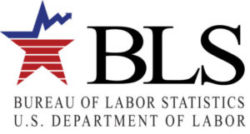New research data on employment, wages, and establishments
– February 2016 –
BLS recently developed research data on nonprofit organizations, including employment, wages, and the number of establishments. These new data provide insights into this important segment of the U.S. economy. Nonprofit employment, total annual wages, and the number of establishments grew steadily each year from 2007 through 2012, even during the 2007–09 recession. By contrast, these three measures were much more volatile over the 2007–12 period for the total private sector, with employment declining by 3.0 percent over the period and nominal wages and the number of establishments growing much slower than in the nonprofit sector.
In October 2014, the Bureau of Labor Statistics (BLS) released a new data series on nonprofit organizations covering the period from 2007 through 2012. BLS frequently receives information requests for this segment of the labor force. This new data product offers important insights into this cross section of the economy.
Many different types of organizations receive tax exemptions from the federal government. Section 501(c) of the U.S. Internal Revenue Code (26 U.S. Code) specifies 29 different classifications of nonprofits that are exempt from some federal taxes. These different categories include civic leagues and social welfare organizations (501(c)(4)), chamber of commerce and business leagues (501(c)(6)), and organizations of past and present members of the U.S. Armed Forces (501(c)(19)).
The most common type of nonprofit is section 501(c)(3), with more than 2 out of every 3 nonprofits falling into this category. This classification includes establishments engaged in charitable, educational, literary, animal welfare, child welfare, public safety, religious, or scientific pursuits. The new BLS research data are restricted to this class of nonprofits in the private sector.


